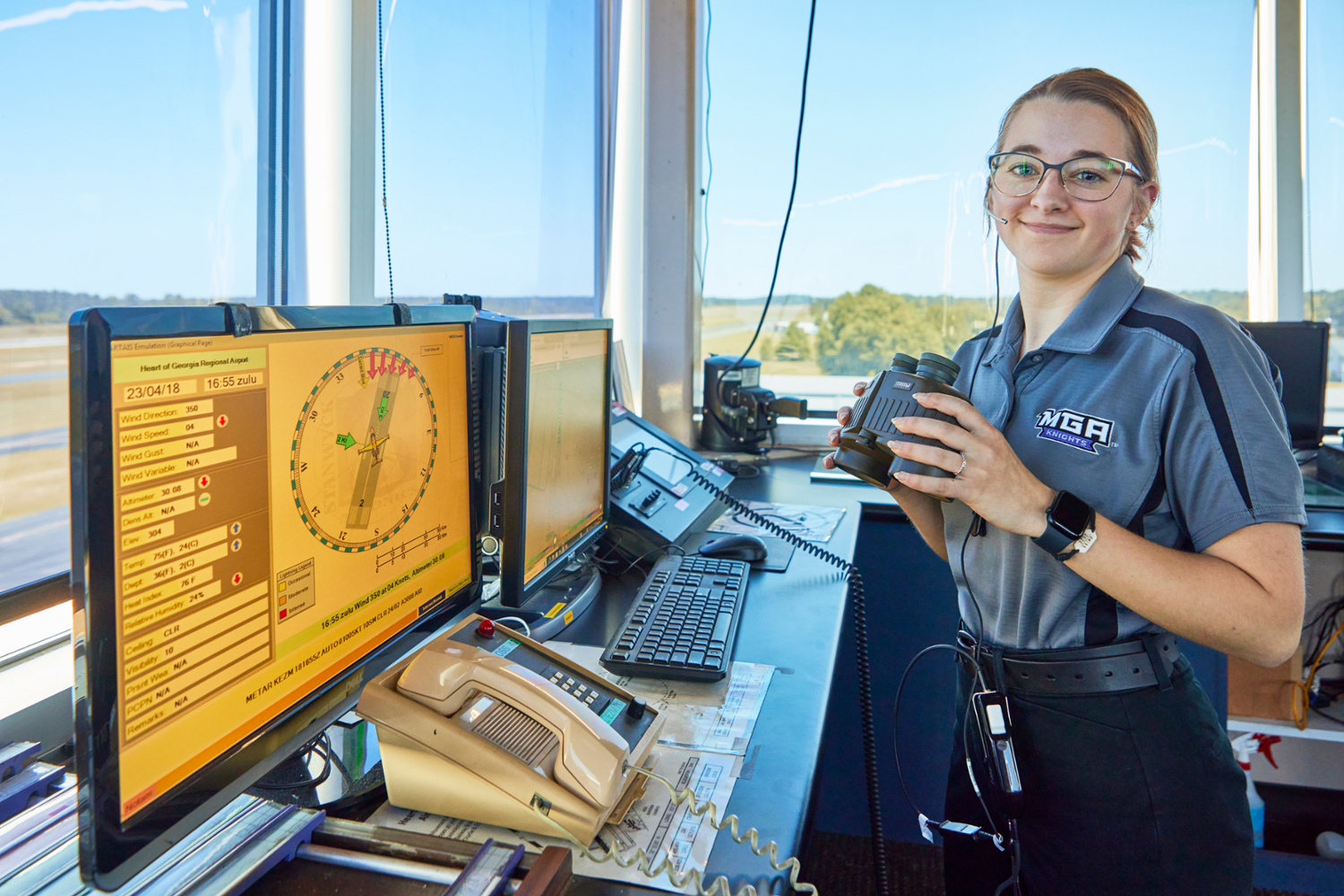FAA Grants Enhanced CTI Status To MGA’s Air Traffic Management Program
Author: Sheron Smith
Posted: Monday, July 7, 2025 12:00 AM
Categories:
School of Aviation | Pressroom | Faculty/Staff | Students
Eastman, GA

Middle Georgia State University’s air traffic management program is the first in the state to earn a significant recognition from the Federal Aviation Administration (FAA) - participation in the Enhanced Air Traffic Collegiate Training Initiative. By becoming an Enhanced AT-CTI school, the University can offer graduates a quicker, more direct pathway into a field vital to aviation safety.
“This is fantastic news for our current students and others interested in exploring air traffic management as a career,” said Angela Taylor, tower chief for Middle Georgia State’s (MGA’s) School of Aviation, which is based on the University’s Eastman Campus. “Being an ‘enhanced’ member means MGA can offer a specialized curriculum aligned with FAA standards, giving students a more direct path into FAA employment. The program enhances classroom learning with FAA-aligned instruction and can lead to job placement opportunities with the FAA after graduation.”
Dr. Christopher Blake, MGA’s president, said “As Georgia's flagship aviation school, we take seriously the responsibility of equipping students with the knowledge, skills, and credentials needed for safe and efficient air travel. Our commitment to our core value of adaptability ensures our programs stay current with technological advances and industry changes, preparing graduates who can thrive in dynamic aviation environments. We are grateful to the FAA team for this recognition and our ongoing partnership with them.”
The FAA’s Air Traffic Collegiate Training Initiative (AC-CTI) is a long-standing partnership designed to cultivate the next generation of air traffic controllers, and it has taken on increased significance as the nation grapples with shortages of air traffic controllers.
Traditionally, graduates of AT-CTI schools must still attend the FAA Academy before assignment to a control facility. But the Enhanced AT-CTI program empowers certified institutions to deliver equivalent training, allowing graduates who meet medical, security, and skills requirements to transition directly into operational facilities, especially those staffed through the FAA Contract Tower (FCT) Program.
Contract towers are air traffic control towers staffed by employees of private companies rather than by FAA employees.
After graduating from one of the approved schools, new hires can immediately begin localized training at an air traffic facility. These graduates still must pass the Air Traffic Skills Assessment (ATSA) and meet medical and security requirements.
In a statement released by the FAA, U.S. Transportation Secretary Sean P. Duffy said, “We need more of the best and brightest in our towers to make our nation’s air traffic system the envy of the world. Enhanced AT-CTI programs like the one at Middle Georgia State University are key to building a next-generation workforce, reducing delays, unlocking the future of aviation.”
In another positive development for MGA’s air traffic management program, Serco, Inc., recently announced a partnership to deliver training and career development for air traffic control students. Through the partnership, MGA air traffic control graduates meeting certain requirements could possibly go directly to work for Serco, a company that currently supports 28 air traffic control towers in seven states.
A typical entry-level salary for air traffic controllers is in the range of $61,000 to $81,000 per year, according to Aviation Job Search. The U.S. Bureau of Labor Statistics reports that the median pay for air traffic controllers is about $144,000 a year.
MGA’s School of Aviation owns and operates the Eastman air traffic control tower used by the Dodge County Airport. The majority of air traffic at the airport is conducted by MGA flight training students.
In addition to a program in air traffic management, the School of Aviation offers degrees in flight (airplane and helicopter), aviation maintenance technology, and aircraft structural technology.